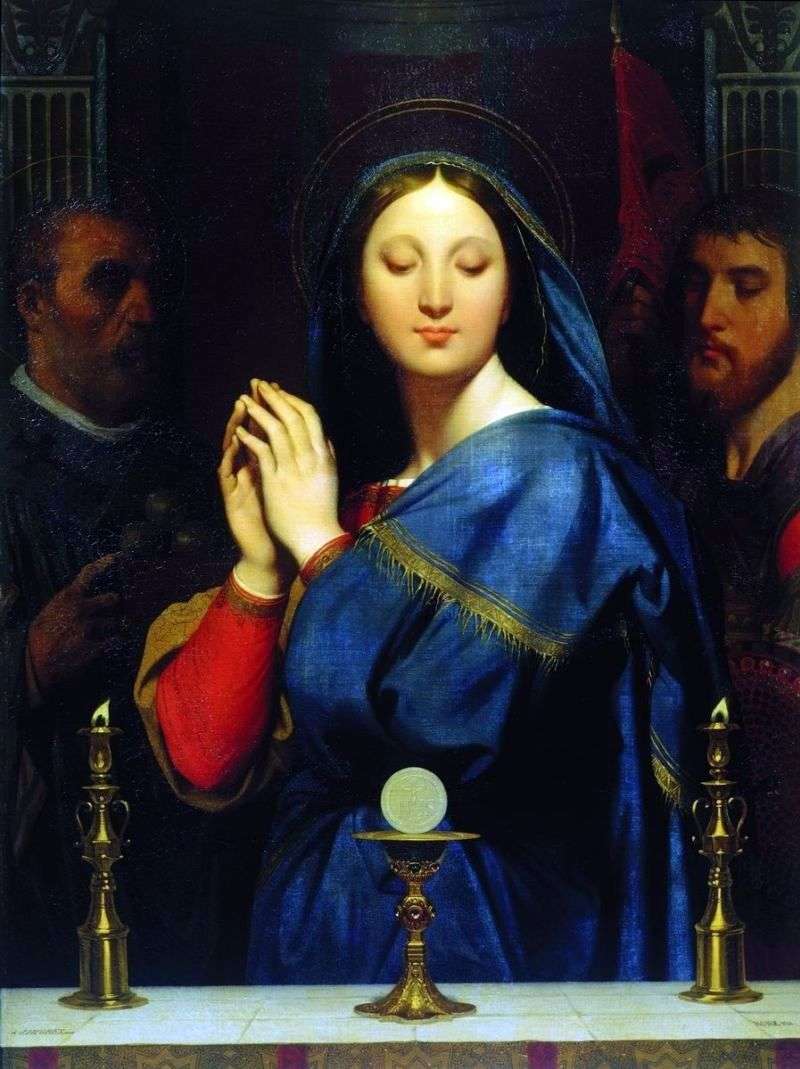
French painter Jean Auguste Dominique Ingres was born in Montauban. He studied under J. Roger, G. Vigan, J. P. Brian in Toulouse and at J.-L. David in Paris. His creative biography is associated not only with France, in the periods from 1806 to 1820 and from 1834 to 1841 he worked in the “eternal city” of Rome, and from 1820 to 1824 – in Florence. In Italy Ingres studied the art of the Renaissance with particular zeal, admired Raphael’s work. Apparently, it was this fascination with the Renaissance and had such a strong influence on his own creativity. Many, especially early, paintings of the artist are distinguished by the classical harmony of the composition, the subtle sense of color, and the flexible and expressive design.
The work “Ambassadors of Agamemnon from Achilles”, for which Engr received “Grand Prix de Rota”, says that he fully mastered the classic system: the composition is strictly logical, the figures resemble an ancient bas-relief, the color decision is subordinated to the drawing. However, already in the “Self-portrait at the age of 24”, the basic principles of Engr’s own portrait art are clearly visible: the bright personality of the character, the refinement of form, the laconicism of strictly thought out and selected details.
Ingres was the greatest portraitist. His works are marked by the accuracy of observations, the truthfulness of the image of the psychological characteristic. In the years 1834-1841. Ingres served as director of the French Academy in Rome, and all his creative life he was the leader of the officially recognized classical trend in painting. The author of historical, literary and mythological compositions acted as a convinced custodian of the inviolability of the academic ideal, his true values, standing away from the transient excitement of life with its dramas of our time.
The main irreconcilable antipode of Ingres among contemporaries was Delacroix. Brilliant artists from different sides contrasted and separated their creativity from the hostile art atmosphere of official power and petty prose of life.
“Madonna in front of the cup with the sacrament,” one of the artist’s most famous works, is kept in the State Museum of Fine Arts. A. Pushkin in Moscow. This picture is an excellent example of orthodox academicism and the highest professional level. The painting was commissioned by Engra, the future Russian emperor Alexander II, and subsequently was part of the imperial collection. It is possible that the cold style of the portrait and the construction of images, designed to mechanically connect the Russian Orthodox and European Catholic iconographic schemes, is explained by the official nature of the order. In any case, the frozen hieratic posture and the correct Raphaelian facial features of Madonna echo with Catholic iconography. The picturesque Engra language of the mid-19th century. strikes with its perfect veracity and constructiveness of the image,
Enngra brilliantly succeeded and pencil portraits. In this technique he created a magnificent “Portrait of Paganini”, group portraits of the family of the French consul in Civita-Vec-kyo Samati, the family of the brother of Emperor Lucien Bonaparte. Most of them belong to the Museum of Engr in Montauban. The late classical traditions of the painter had a great influence on the academic quality of French art. Ingres has always been far from politics and did not take part in the events of 1830 in France. But at this time he writes a remarkable portrait of the head of the political press of that time, the owner of the popular newspaper Louis François Berten the Elder, a mighty gray-haired old man with an intelligent, calm gaze of “the master of life and circumstances.” It is noteworthy that when Bertin appeared on the street, they said about him: “Here comes the portrait of Engr.”
One of the most significant works written by Engr at the end of his life is “The Source”. This image of a young girl holding a jug, from which water flows, is an allegorical symbol of the eternal source of life.
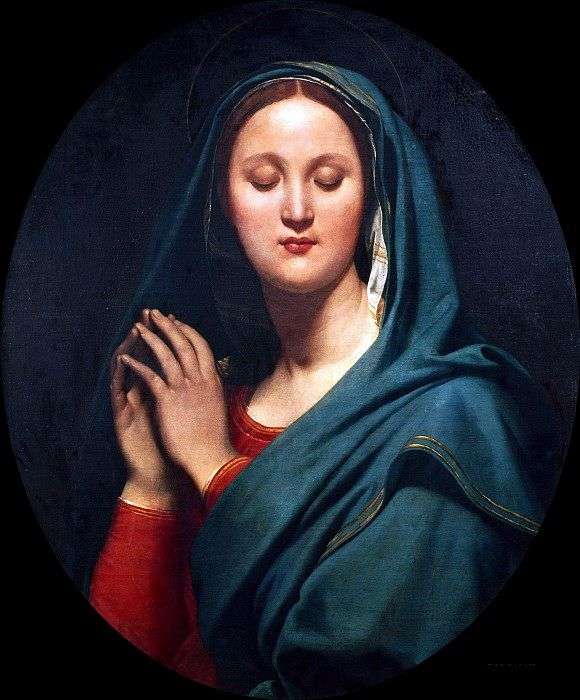 The Virgin in the Blue Veil by Jean Auguste Dominique Ingres
The Virgin in the Blue Veil by Jean Auguste Dominique Ingres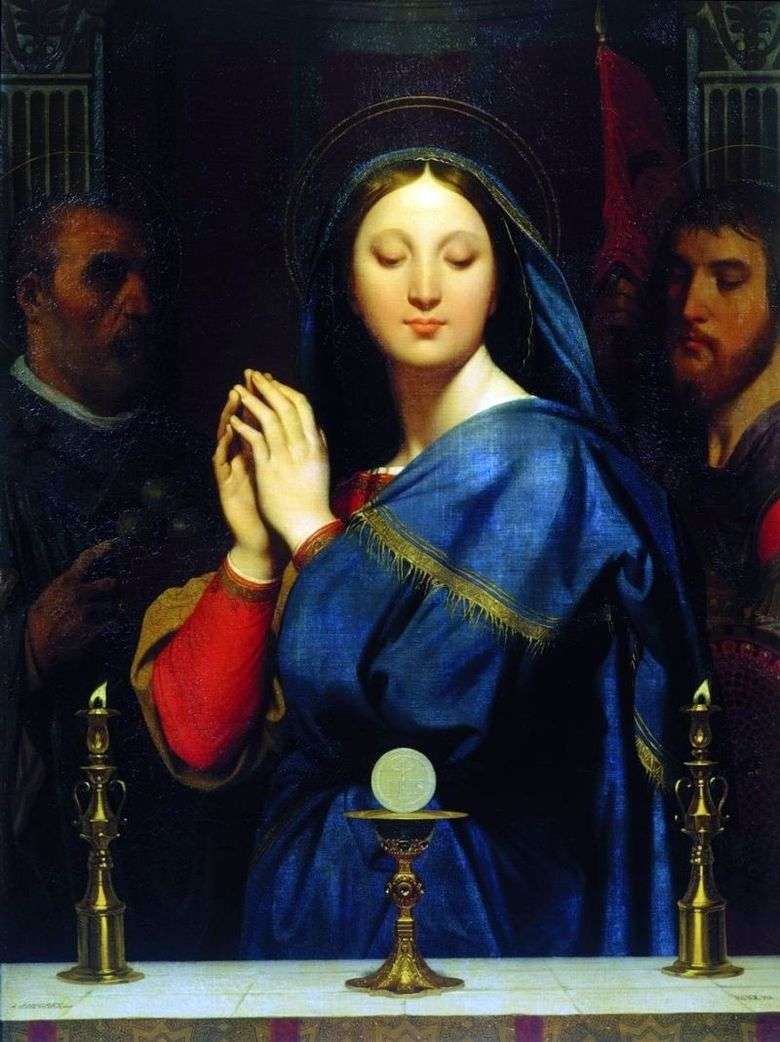 Madonna antes del cuenco de comunión – Jean Auguste Dominique Ingres
Madonna antes del cuenco de comunión – Jean Auguste Dominique Ingres Vow of Louis XIII by Jean Auguste Dominique Ingres
Vow of Louis XIII by Jean Auguste Dominique Ingres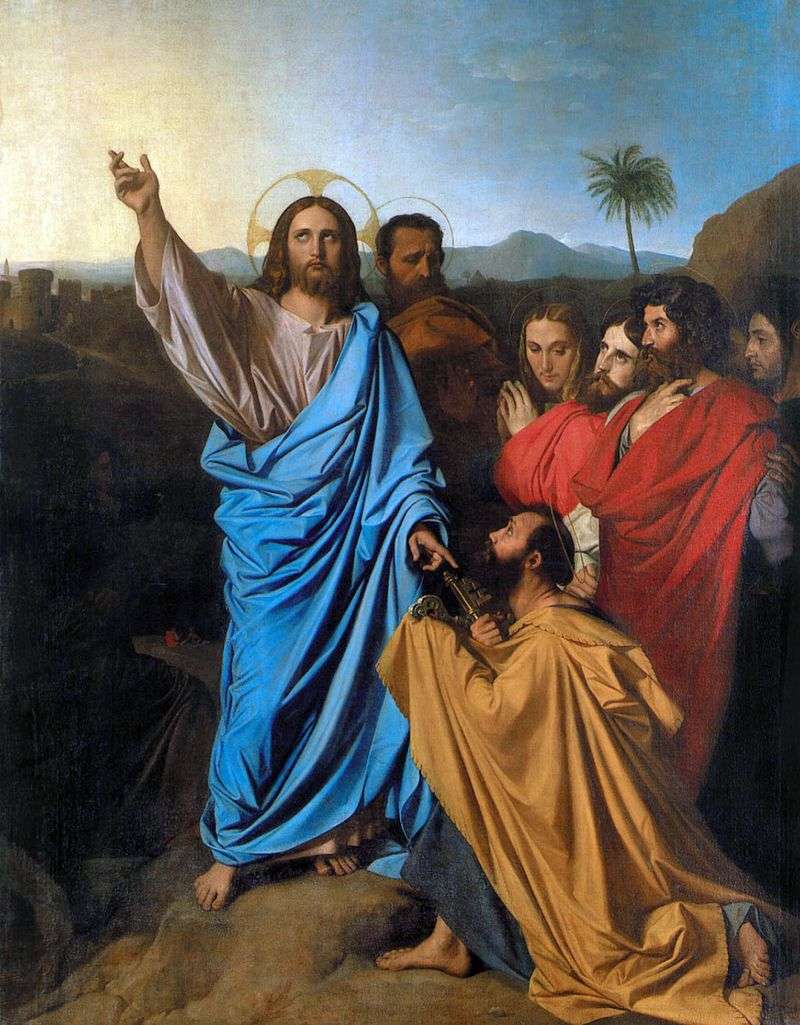 Christ transmitting St. Peter Keys from Paradise by Jean Auguste Dominique Ingres
Christ transmitting St. Peter Keys from Paradise by Jean Auguste Dominique Ingres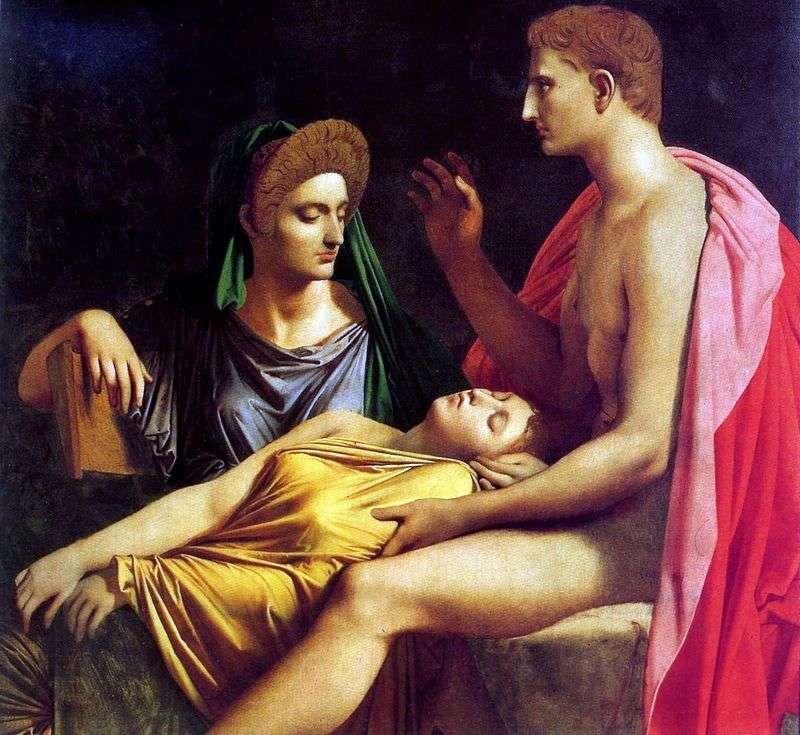 Virgil reading the Aeneid by Jean Auguste Dominique Ingres
Virgil reading the Aeneid by Jean Auguste Dominique Ingres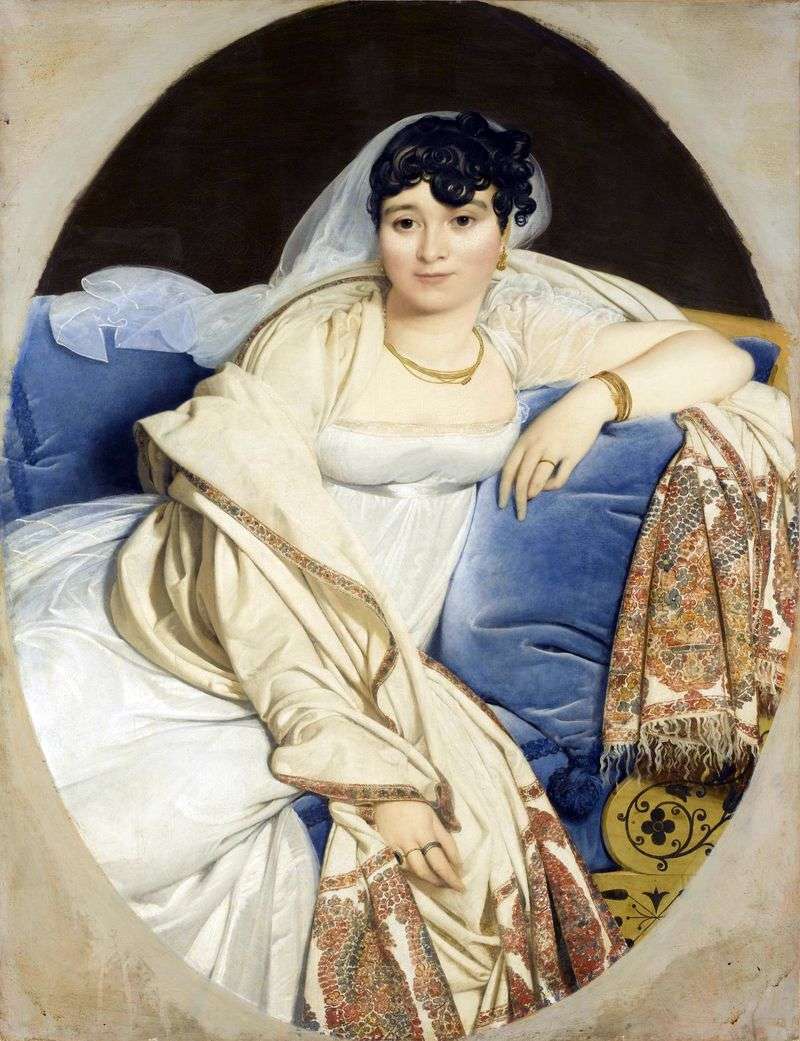 Portrait of Mrs. Riviere by Jean Auguste Dominique Ingres
Portrait of Mrs. Riviere by Jean Auguste Dominique Ingres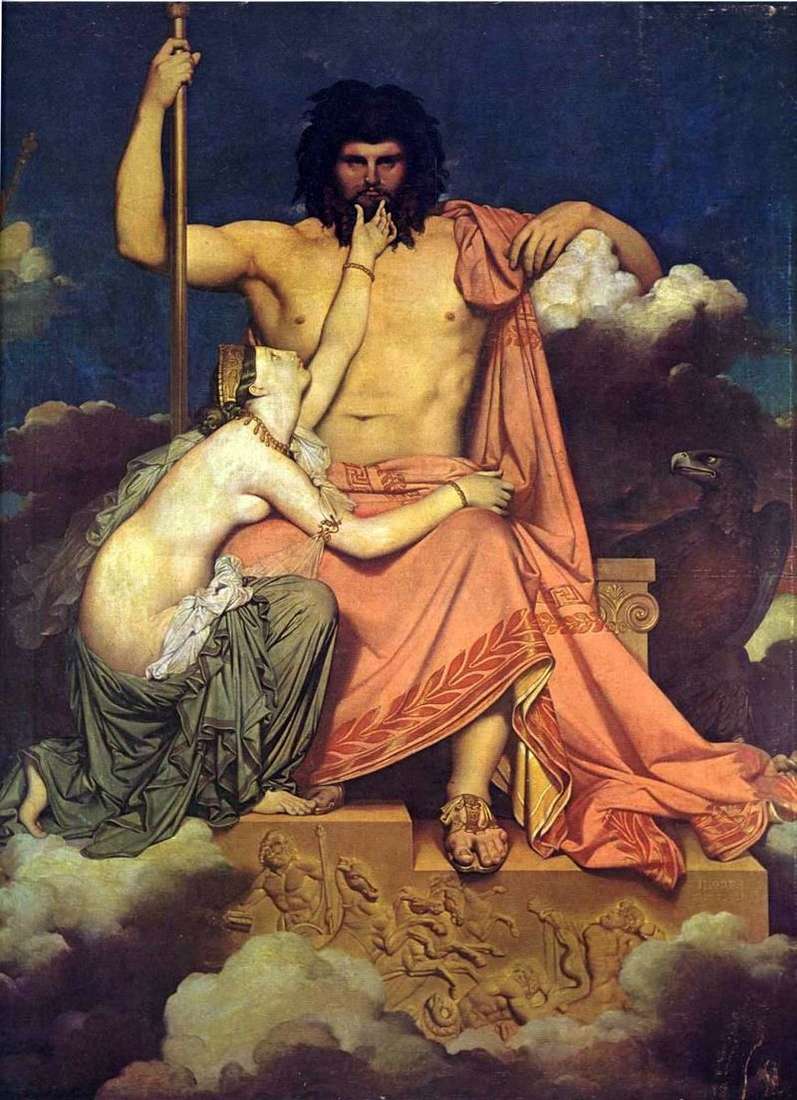 Jupiter and Thetis by Jean Auguste Dominique Ingres
Jupiter and Thetis by Jean Auguste Dominique Ingres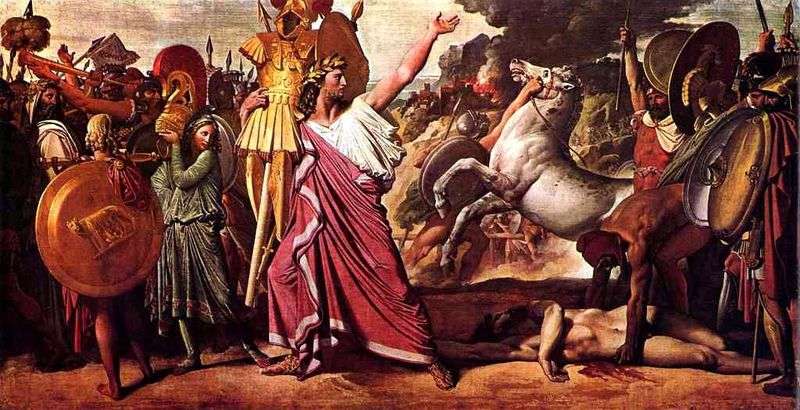 Romulus by the winner of Akron – Jean Auguste Dominique Ingres
Romulus by the winner of Akron – Jean Auguste Dominique Ingres